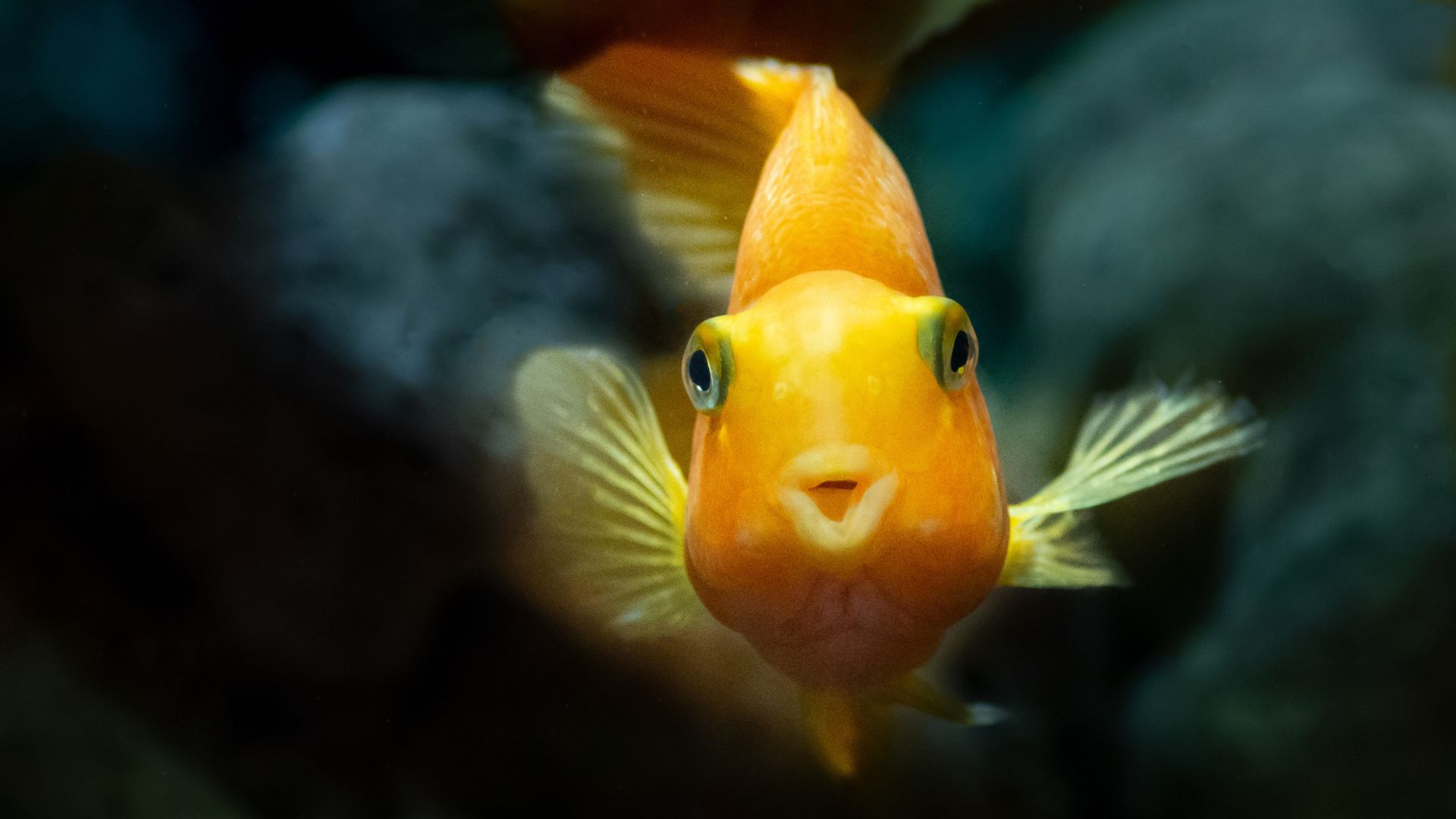Can cats eat strawberries? Our vet reveals the answer
Can cats eat strawberries? Get the ‘berry’ best advice from our vet about feeding strawberries to your cat
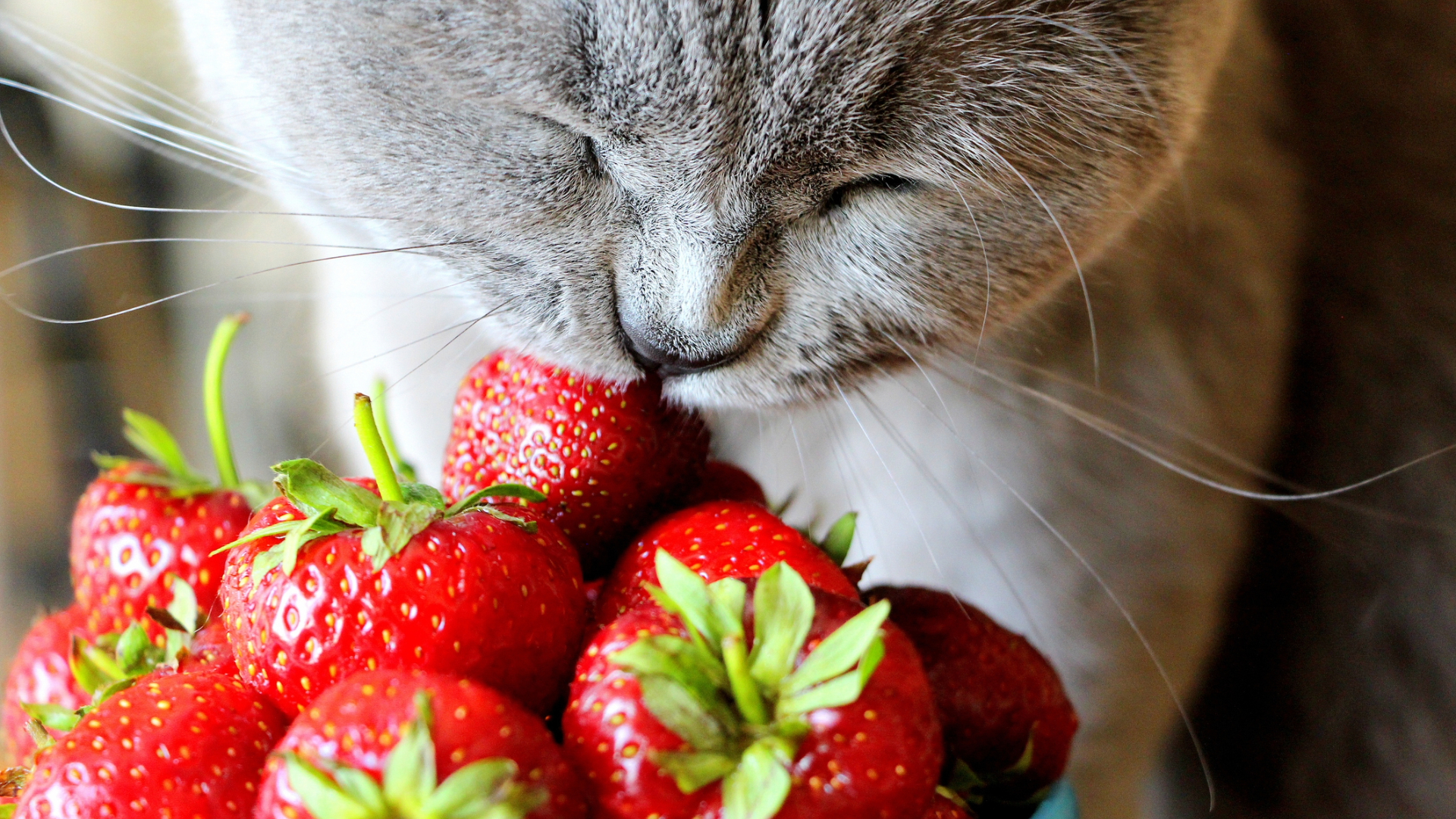
Can cats eat strawberries safely? As pet owners, we always want to ensure that our cats are getting the best possible diet. Cats are naturally curious creatures and often show an interest in various human foods, including fruits like strawberries.
In this article, I will explain whether strawberries are suitable for cats, and discuss any health benefits or risks associated with them. We will also explore how many strawberries are safe to feed your furry friend, which fruits should be avoided, as well as discussing top tips on feeding strawberries to your cat.
As a vet with over 13 years of experience in feline nutrition, I'll provide expert insights to help you make informed choices for your cat’s diet.
Can cats eat strawberries?
Cats can eat strawberries, provided they are fed in small amounts. Strawberries are not toxic to cats, and some cats may even enjoy the scent and texture of this fruit.
However, it is important to note that cats are obligate carnivores, which means their diet should be primarily meat-based. While strawberries contain some beneficial nutrients, fiber, and antioxidants, they do not provide the essential proteins and amino acids that cats require for optimal health.
Benefits of feeding strawberries to cats:
- Hydration support: Strawberries have a high water content, which may help to keep cats hydrated to some extent. This may be especially helpful if they don’t drink much water at home.
- Source of fiber: The fiber in strawberries can aid with digestion and bowel movements in cats. It may also help prevent constipation.
- Rich in antioxidants: Antioxidants can help protect cells from damage caused by free radicals and support overall well-being.
- Vitamin C: While cats produce their own vitamin C, additional sources may offer minor health benefits.
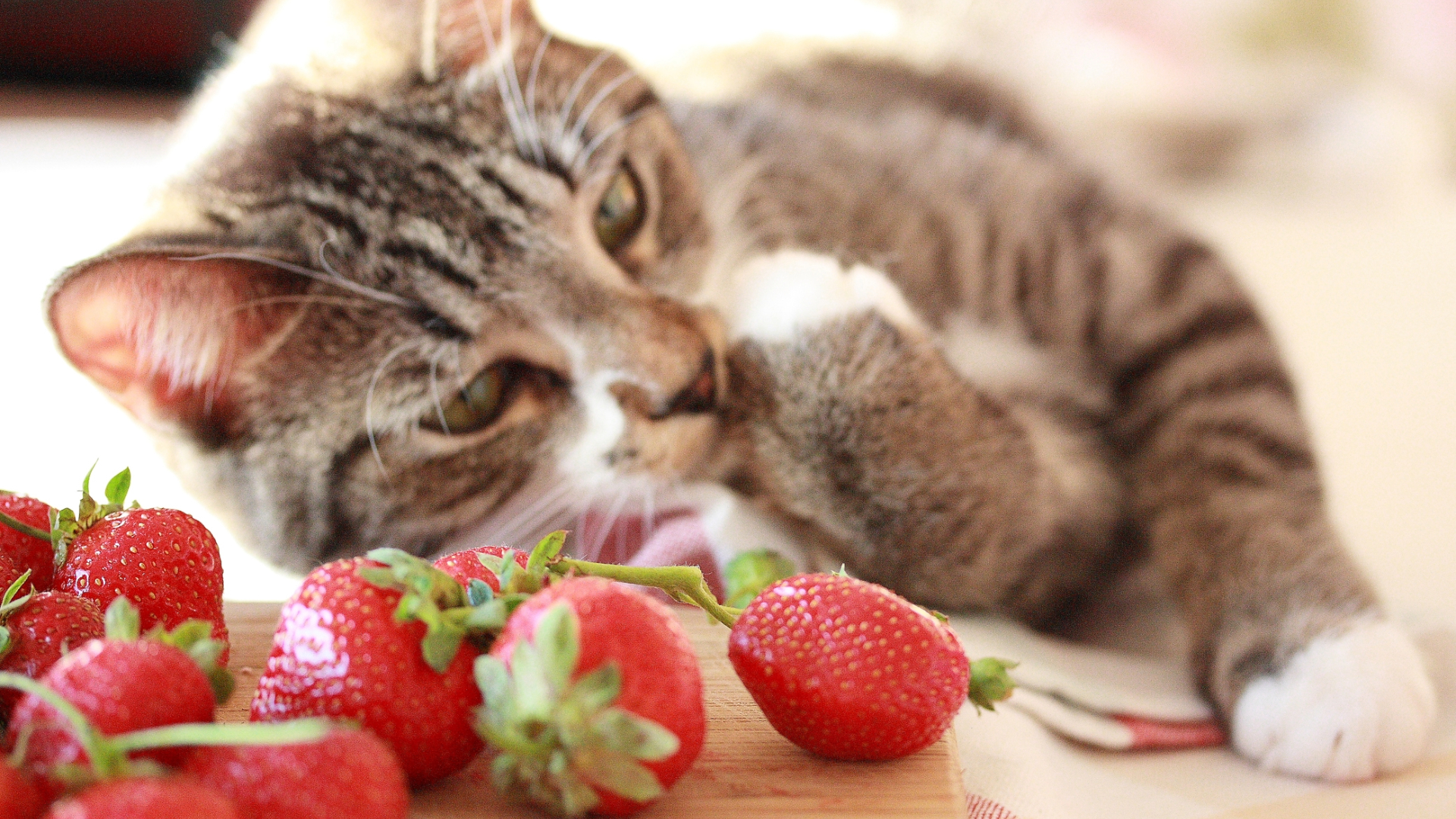
Potential risks of feeding strawberries to cats:
- High sugar content: Strawberries contain natural sugars that, if eaten in excess, may lead to unwanted weight gain or contribute to diabetes over time.
- Digestive issues: Some cats may have a sensitive stomach and could experience diarrhea or vomiting after eating strawberries.
- Allergic reactions: Although rare, some cats may be allergic to strawberries, leading to symptoms like itching or swelling.
- Pesticides and chemicals: Strawberries are often coated with pesticide residues, so washing them thoroughly is essential before offering them to your cat.
Since every cat is different, it’s best to introduce strawberries gradually and to closely monitor your cat’s reaction when they eat them. You might want to read about other ways to improve your cat’s diet in our handy guide.
How many strawberries can I give my cat?
When feeding strawberries to your cat, always remember moderation is key. Start off with a small bite-sized piece. Aim for about the size of a blueberry to begin with. Cats do not need fruit in their diet, so strawberries should only be an occasional treat rather than a regular food source.
For a small cat, one little piece of strawberry once or twice a week is enough. Larger cats may tolerate one or two small pieces, but too much can cause digestive discomfort so always err on the side of caution.
Vital Essentials Freeze Dried Raw Single Ingredient Cat Treats | Amazon
These tasty treats are a natural, protein-rich snack made from a single ingredient – real chicken hearts. They are packed with essential nutrients like taurine, which supports heart and eye health, making them a great choice for cats on a raw or high-protein diet. Plus, the freeze-drying process locks in freshness and flavor without the need for artificial additives.
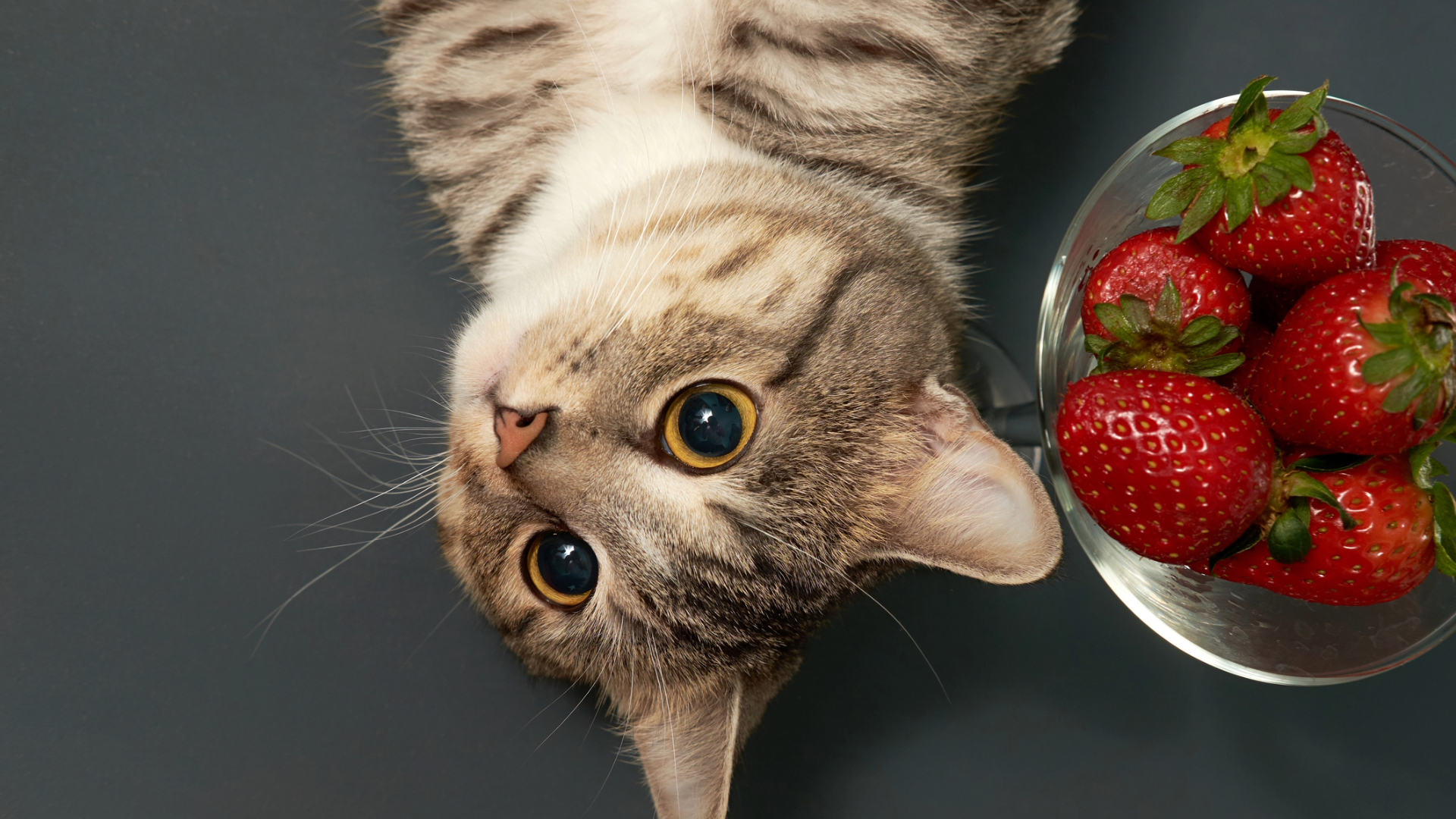
What happens if my cat eats too many strawberries?
If your cat eats too many strawberries, they may experience digestive issues such as vomiting or diarrhea. The natural sugars in strawberries can also contribute to weight gain if consumed regularly in large amounts. Additionally, filling up on strawberries may reduce your cat’s appetite for their nutritionally balanced cat food, potentially leading to nutrient deficiencies.
While strawberries are generally safe in small quantities, if your cat eats a large amount and starts to show signs of discomfort, it's best to contact your vet for guidance.
How to feed your cat a strawberry
If you want to safely offer your cat a strawberry, follow these simple steps:
- Wash the strawberry thoroughly: This removes any pesticides or harmful chemicals.
- Remove the stem and leaves: Although not toxic, they can be difficult for cats to digest.
- Cut into small, manageable pieces: This prevents choking hazards and makes it easier to eat.
- Offer a small piece initially and observe: If your cat shows no signs of digestive upset, you may offer another small piece occasionally.
- Avoid adding sugar or toppings: Sweeteners, syrups, or chocolate coatings can be harmful to cats.
Here are some alternative ways to feed strawberries to your cat:
- Mix a small amount into their regular food
- Freeze some chopped-up pieces for a cooling summer treat
- Mash with a little water to make a purée and offer as a lick-able treat
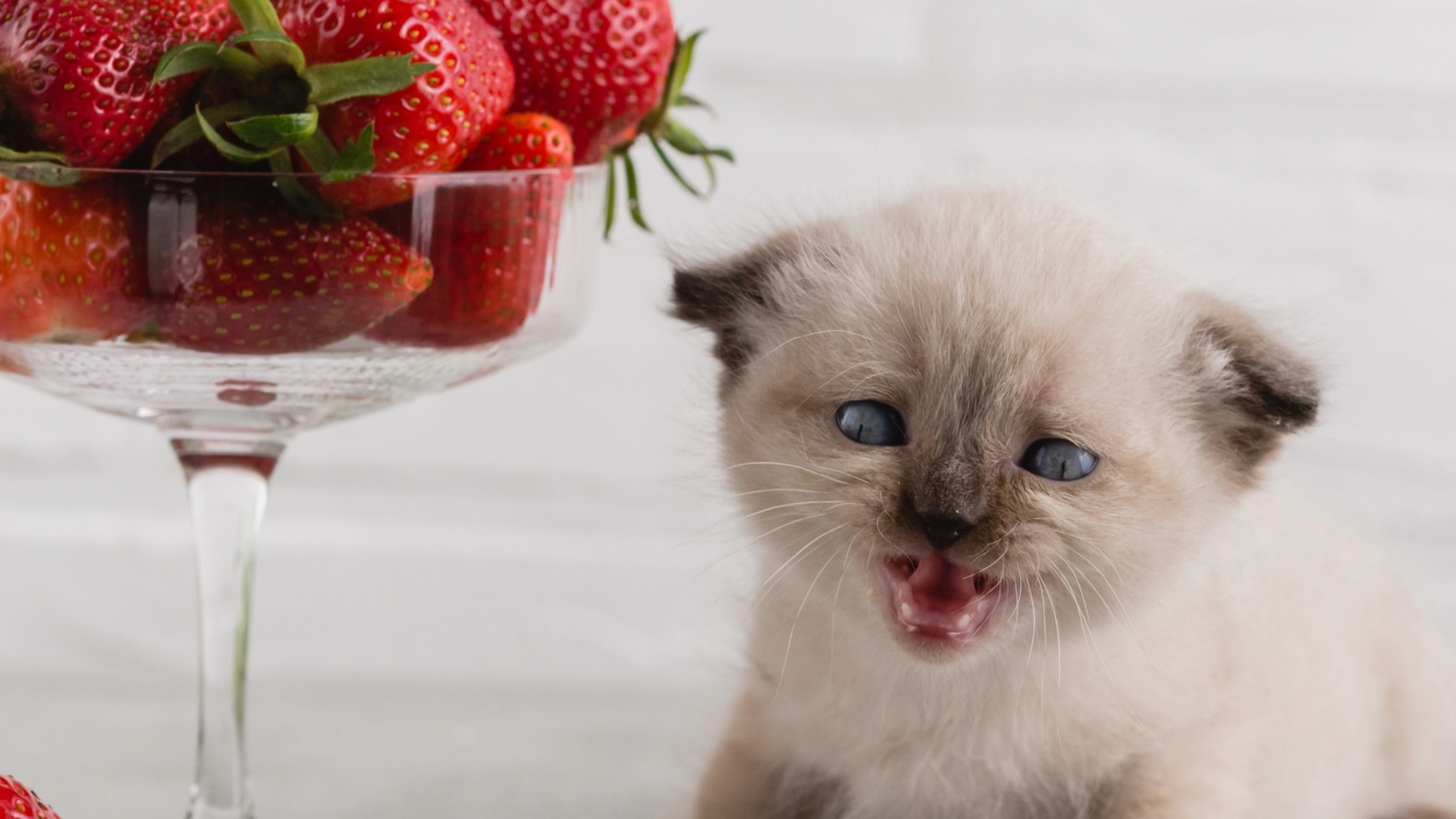
Which fruits are toxic to cats?
While strawberries are safe in moderation, some fruits should never be given to cats. Here are some common toxic fruits:
- Grapes and raisins: They can cause kidney failure, even in small amounts
- Cherries: They contain cyanogenic compounds that are harmful to cats
- Citrus fruits (lemons, limes, oranges): The essential oils and acids can cause stomach irritation
- Avocado: They contain persin, which can be toxic to cats.
- Apple seeds and cores: Apple seeds contain cyanide, which is dangerous for cats.
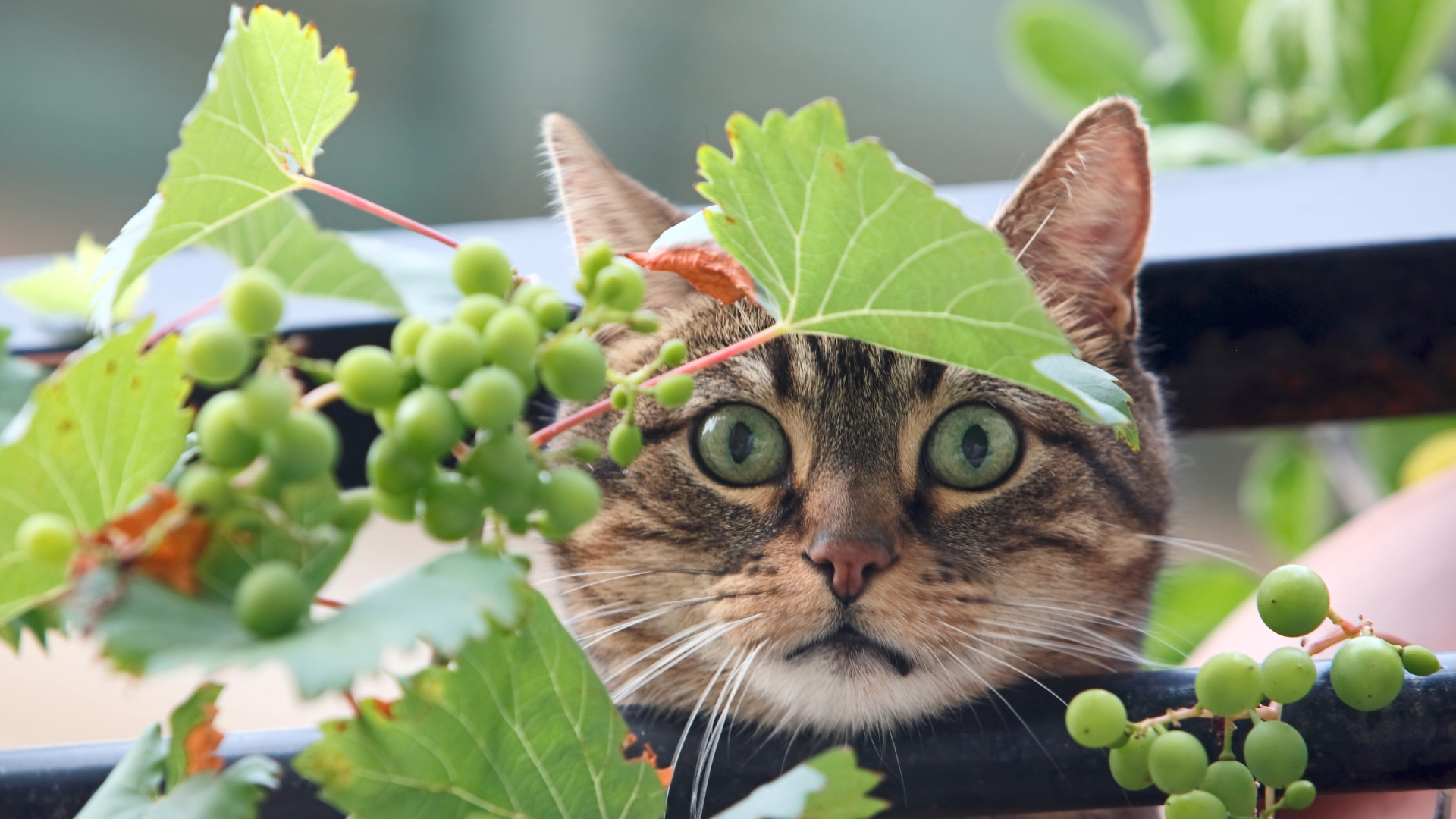
If your cat ingests any of these toxic fruits, contact your vet immediately. All cat owners need to be aware of foods that cats should never eat.
Conclusion
Cats can eat strawberries – as long as they are given in small amounts. If your cat enjoys strawberries, they can be given as an occasional treat, but they should never replace a balanced diet. While they contain some beneficial nutrients, they do not offer the essential proteins that cats require.
To ensure your cat gets the best nutrition, focus on high-quality animal-based foods. If you're interested in upgrading your cat’s diet, you can make your own cat treats at home.
As always, if you have any concerns about your cat’s diet or health, speak to your vet, they will be more than happy to help.
Looking for alternative kitty snacks? Read our guide on the best cat treats. Or, you might want to read about surprising foods cats can eat.
Edited by Megan Milstead.
Recent updates
This feature was last updated in February 2025 by Emma Chandley.
PetsRadar Newsletter
Get the best advice, tips and top tech for your beloved Pets
Emma Chandley is a vet with 14 years of experience and has a keen interest in surgery. After graduating from the Royal Vet College in London in 2011, she achieved a postgraduate certificate in small animal surgery from the British Small Animal Veterinary Association and Nottingham Trent University. She was then awarded advanced practitioner status in the same discipline by The Royal College of Veterinary Surgeons. She has a black Labrador and two pygmy goats at home.


